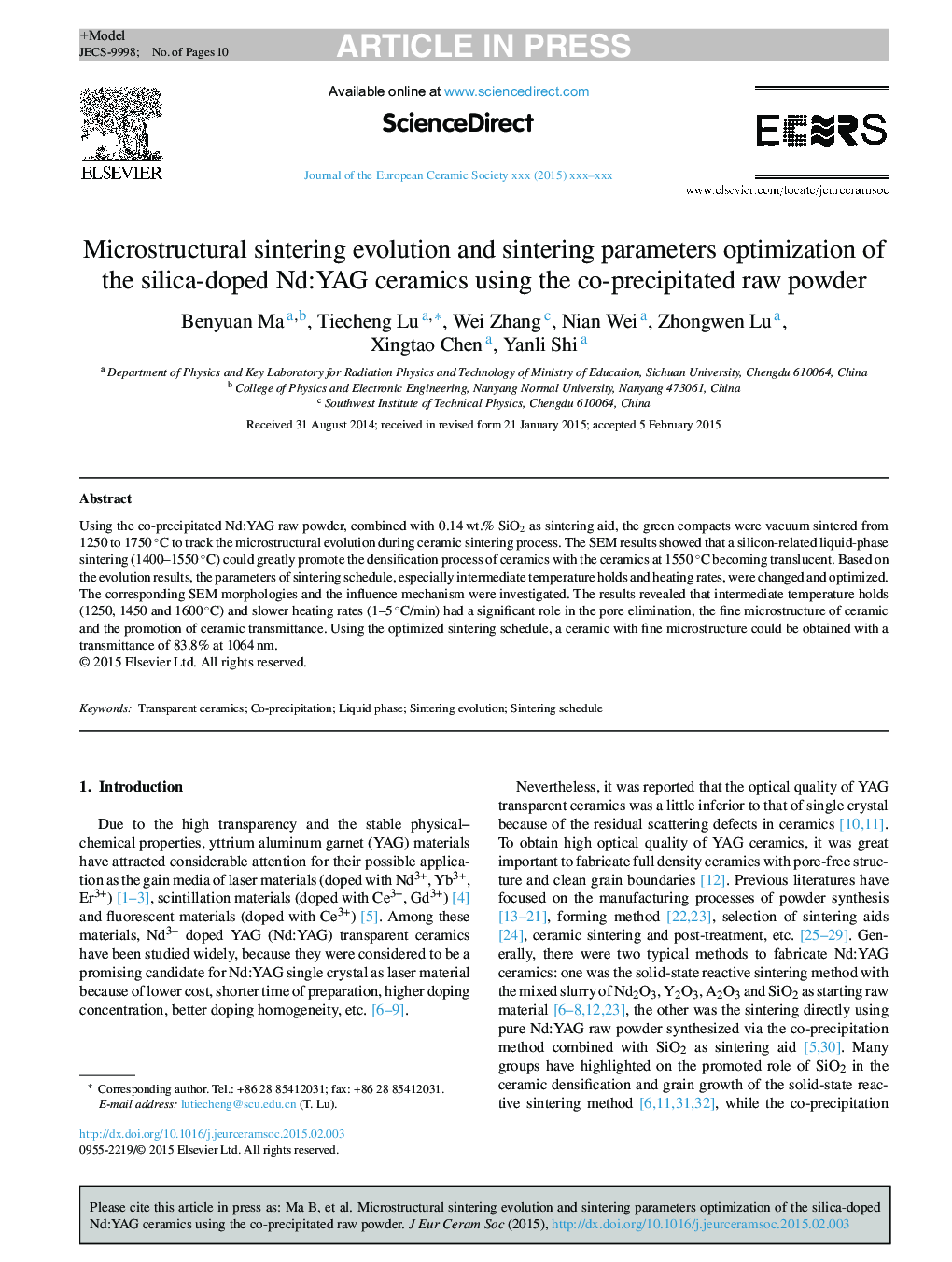| Article ID | Journal | Published Year | Pages | File Type |
|---|---|---|---|---|
| 10629572 | Journal of the European Ceramic Society | 2015 | 10 Pages |
Abstract
Using the co-precipitated Nd:YAG raw powder, combined with 0.14 wt.% SiO2 as sintering aid, the green compacts were vacuum sintered from 1250 to 1750 °C to track the microstructural evolution during ceramic sintering process. The SEM results showed that a silicon-related liquid-phase sintering (1400-1550 °C) could greatly promote the densification process of ceramics with the ceramics at 1550 °C becoming translucent. Based on the evolution results, the parameters of sintering schedule, especially intermediate temperature holds and heating rates, were changed and optimized. The corresponding SEM morphologies and the influence mechanism were investigated. The results revealed that intermediate temperature holds (1250, 1450 and 1600 °C) and slower heating rates (1-5 °C/min) had a significant role in the pore elimination, the fine microstructure of ceramic and the promotion of ceramic transmittance. Using the optimized sintering schedule, a ceramic with fine microstructure could be obtained with a transmittance of 83.8% at 1064 nm.
Related Topics
Physical Sciences and Engineering
Materials Science
Ceramics and Composites
Authors
Benyuan Ma, Tiecheng Lu, Wei Zhang, Nian Wei, Zhongwen Lu, Xingtao Chen, Yanli Shi,
